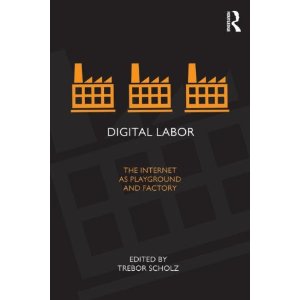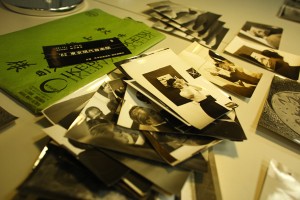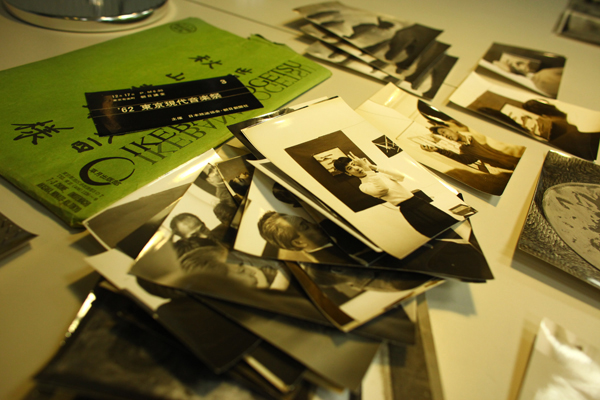Posts from the ‘resources’ Category
![]()
Artstor announces new Digital Humanities Award
http://www.artstor.org/news/n-html/digital-humanities.shtml
Winners will receive five years’ free use of Shared Shelf cloud-based asset management tool.
Shared Shelf was created by Artstor in collaboration with eight colleges and universities and The Society of Architectural Historians to help institutions build, manage, and preserve image and video collections. It’s a cloud-based service that allows for straightforward management of the sorts of complex rich media collections that support many Digital Humanities projects, allowing content to be used and re-used in different contexts while maintaining a stable and flexible home for assets.
The service currently supports such diverse projects as the NYU archeological excavations at Abydos, the UMass-Amherst Biodiversity project, the UCSD travelogue film collection, and 29 different Cornell University collections ranging from Hip Hop Party and Event Flyers to images from major illustrated editions of Dante’s Divine Comedy and the Plant Pathology Herbarium. Collections managed in Shared Shelf can draw upon Web services supporting authority files built into its vocabulary warehouse, and can be published out to open websites (such as collection specific Omeka sites or Shared Shelf Commons, an open-access library of digital media from institutions that subscribe to Shared Shelf), into the Artstor work space (alongside Artstor Digital Library content), or into an emerging set of disciplinary portals. All content (metadata and source image/video files) is managed and preserved in accordance with NSDA Level 1 requirements and is available to collection managers at all times without any “lock in,” can be harvested dynamically through OAI protocols, or be called from open APIs.
As a non-profit institution working to derive shared solutions to challenges of the digital world, Artstor believes that the Digital Humanities Awards will recognize and help support innovative and intellectually stimulating projects in the field — and give digital scholars the chance to create and maintain those projects using Shared Shelf.
Culture Machine is an online, open access journal addressing focused topics in new media and the digital humanities.
from the website:
“Culture Machine is a series of experiments in culture and theory.
The aim of Culture Machine is to seek out and promote the most provocative of new work, and analyses of that work, in culture and theory from a diverse range of international authors. Culture Machine is particularly concerned with promoting research which is engaged in the constitution of new areas of inquiry and the opening of new frontiers of cultural and theoretical activity. It is also committed to the generation of possibilities for new scholarship and research. Other than these founding aims (which are themselves, along with the very concepts of ‘founding’ and of ‘aims’, possible themes to be analysed), Culture Machine has no specific agenda, no project or programme – cultural, theoretical, political, social or ethical – it intends to see worked out in its various manifestations. Culture Machine is instead endeavouring be to cultural studies and cultural theory what ‘fundamental research’ is to the natural sciences: open ended, non-goal orientated, exploratory and experimental in approach.”
The Museum of Modern Art launches post, a participatory digital platform for global research
February 20th, 2013
April Durham
The Museum of Modern Art launches post,
a participatory digital platform for global research
post is an open forum for sharing research and circulating works in progress, offering a platform for critical response and an instrument for increasing expertise through exposure to ideas from around the globe. It is a place for conversation and debate, for building a nuanced understanding of the histories that shape our present. As a Web platform, post provides an alternative to the model of a unified art-historical narrative. post instead allows a malleable, layered understanding of multiple notions of modernity to emerge over time, as more people from more places participate.
Emerging out of research undertaken at MoMA, post develops a network of partners and users whose complementary research and concerns will shape future approaches and content. Starting with a specific thematic focus, the site regularly releases essays, interviews, reports, reflections, archival materials, and artists’ commissions, ensuring that new voices are constantly entering the discussion. The site is designed to encourage active participation; users and institutional partners are encouraged to upload their own findings and share their questions, together gaining broader exposure and expertise. In time, and depending upon the interest of the partners, post will broaden its focus.
Committed to investigating artistic practices that have historically been overlooked in MoMA’s collection and exhibitions, post initially explores sites of experimental practices in regions that are the focus of C-MAP research: East Asia, Central and Eastern Europe, and Latin America and the Caribbean. Upon its launch, post will present its first case study, in partnership with Keio University Art Center, featuring the archival materials of Sogetsu Art Center, an epicenter of avant-garde artistic experiments in Tokyo in the 1960s that hosted an exciting, rapid-fire series of programs in experimental music, jazz, and cinema. The initial presentation features essays, interviews, and works by artists related to Sogetsu Art Center—Shiomi Mieko, Yokoo Tadanori, Matsumoto Toshio, andYamaguchi Katsuhiro—and artists who have been the subject of C-MAP research—Geta Brătescu, Chim↑Pom, and Jikken Kobo, among others.
About C-MAP
C-MAP research questions the judgments that grow out of the assumption that artistic modernism is or was determined solely by Western European and North American narratives of early-20th-century avant-gardes. The aim of C-MAP is to understand more fully the historical imperatives and changing conditions of transnational networks of artistic practice, and to seek verbal and material accounts of histories that are little known outside their countries of origin. C-MAP forges new relationships and partnerships and undertakes collaborative research in order to develop new expertise, share what has been learned, and, ultimately, inform the development of exhibitions, publications, educational programs, and MoMA’s collection for the benefit of scholars, curators, educators, students, critics, artists, and the general public.
The Museum of Modern Art’s Contemporary and Modern Art Perspectives in a Global Age Initiative (C-MAP) is supported by The Andrew W. Mellon Foundation and The International Council of The Museum of Modern Art.
Additional funding is provided by Patricia Phelps de Cisneros, Adriana Cisneros de Griffin, and Marlene Hess.
post was designed and developed by TC Labs. Creative direction by Caleb Waldorf.
Debates in the Digital Humanities is now available online as an open source, and free, project of CUNY:
For those attending the CDH Rhetoric and Remix Reading Group on January 16th, the three articles from Debates in the Digital Humanities are available at the links below:
Lisa Sipro, “This is Why We Fight: Defining the Values of the Digital Humanities”
Alan Liu, “Where is the Cultural Criticism in the Digital Humanities”
 Digital Labor: The Internet as Playground and Factory
Digital Labor: The Internet as Playground and Factory
Edited by Trebor Scholz
Digital Labor asks whether life on the internet is mostly work, or play. We tweet, we tag photos, we link, we review books, we comment on blogs, we remix media, and we upload video to create much of the content that makes up the web. And large corporations profit on our online activity by tracking our interests, affiliations, and habits—and then collecting and selling the data. What is the nature of this interactive ‘labor’ and the new forms of digital sociality that it brings into being? The international, interdisciplinary contributors to Digital Labor suggest that there is no longer a clear divide between ‘the personal’ and ‘work,’ as every aspect of life drives the digital economy: sexual desire, boredom, friendship—and all become fodder for speculative profit. They argue that we are living in a total labor society and the way in which we are commoditized, racialized, and engendered is profoundly and disturbingly normalized by the dominant discourse of digital culture. Digital Labor poses a series of questions about our digital present: How is the global crisis of capitalism linked to the hidden labor of the digital economy? How do we address that most online interaction, whether work or play, for profit or not, is taking place on corporate platforms? How can we acknowledge moments of exploitation while not eradicating optimism, inspiration, and the many instances of individual financial and political empowerment? In response to these questions, this collection offers new definitions of digital labor that address and challenge the complex, hybrid realities of the digital economy.
Introduction: Trebor Scholz Why Does Digital Labor Matter Now? I. The Shifting Sites of Labor Markets
1. Andrew Ross On the Digital Labor Question
2. Tiziana Terranova Free Labor
3. Sean Cubitt The Political Economy of Cosmopolis
4. McKenzie Wark Considerations on A Hacker Manifesto II. Interrogating Modes of Digital Labor
5. Ayhan Aytes Return of The Crowds: Mechanical Turk and Neoliberal States of Exception
6. Abigail De Kosnik Fandom as Free Labor
7. Patricia Clough The Digital, Labor and Measure Beyond Biopolitics
8. Jodi Dean Whatever Blogging III. The Violence of Participation
9. Mark Andrejevic Estranged Free Labor
10. Jonathan Beller Digitality and The Media of Dispossession
11. Lisa Nakamura Don’t Hate the Player, Hate the Game: The Racialization of Labor in World of Warcraft IV. Organizing Networks in an Age of Vulnerable Publics
12. Michel Bauwens Thesis on Digital Labor in an Emerging P2P Economy
13. Christian Fuchs Class and Exploitation on the Internet
14. Ned Rossitter and Soenke Zehle Acts of Translation: Organizing Networks as Algorithmic Technologies of the Common
Rather than have a standalone page for resources, I thought we could use “resources” as a post category. This will help keep the info that was previously listed (posted below), and it will allow for more dynamic content. Rather than having to edit a page, members can just add a new post using the “resources” category. I’ll also make “resources” a dropdown item under “News” in the main navigation.
Here’s the listing of initial resources:
Websites & Organizations
HASTAC (Humanities, Arts, Sciences, Technology Advances Collaboratory)
http://www.hastac.org/
ADHO (Alliance of Digital Humanities Organizations)
http://digitalhumanities.org/
Society for Cinema and Media Studies
http://www.cmstudies.org/
The American Studies Association
http://www.theasa.net/
Association of Internet Researchers
http://aoir.org/
DiGRA (Digital Games Research Association)
http://www.digra.org/
Rhizome
http://rhizome.org/
H-Net (Humanities and Social Sciences Online)
http://www.h-net.org/
TEI (Text Encoding Initiative)
http://www.tei-c.org/index.xml
ACH (Association for Computers and the Humanities)
http://www.ach.org/
A Few Journals
Covergence
http://con.sagepub.com/
Digital Humanities Quarterly (DHQ)
http://digitalhumanities.org/dhq/
Game Studies
http://gamestudies.org/1001
Games and Culture
http://gac.sagepub.com/
New Media & Society
http://nms.sagepub.com/
Vectors
http://www.vectorsjournal.org/
Except where otherwise noted, content on this site is licensed under a Creative Commons License.



